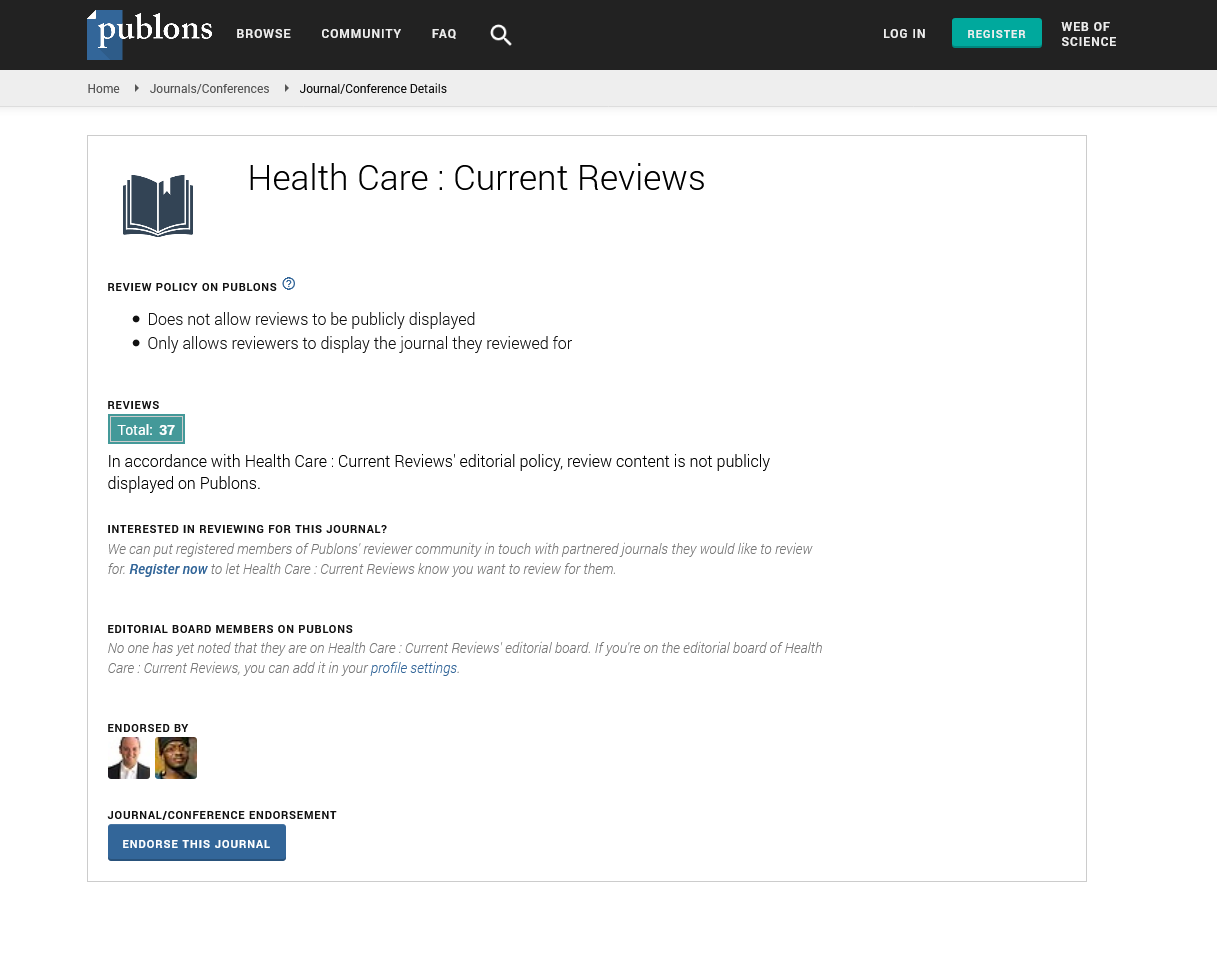Indexed In
- Open J Gate
- Academic Keys
- RefSeek
- Hamdard University
- EBSCO A-Z
- Publons
- Geneva Foundation for Medical Education and Research
- Google Scholar
Useful Links
Share This Page
Journal Flyer

Open Access Journals
- Agri and Aquaculture
- Biochemistry
- Bioinformatics & Systems Biology
- Business & Management
- Chemistry
- Clinical Sciences
- Engineering
- Food & Nutrition
- General Science
- Genetics & Molecular Biology
- Immunology & Microbiology
- Medical Sciences
- Neuroscience & Psychology
- Nursing & Health Care
- Pharmaceutical Sciences
Fury of Nipah virus and possible treatment
World Congress & Expo on Healthcare IT and Nursing
August 21-22, 2018 | Paris, France
Anil Batta
Govt. Medical College, India
Posters & Accepted Abstracts: Health Care Current Reviews
Abstract:
Nipah virus provides one of the most striking examples of an emerging virus and illustrates many of the pathways leading from a wildlife reservoir to human infections. Prior to 1998 there had been no reports of a disease of wildlife, domestic animals or humans that would subsequently be considered infection with Nipah virus. Despite the emergence of the related virus, Hendra, a number of years before Nipah virus, there was nothing to herald the sudden appearance of this virus, which in itself is surprising given the regularity of outbreaks since it appeared. However, the characterization of Hendra virus paved the way for the identification of the causative agent of disease in Malaysian pigs and farm workers. In Malaysia, A major NiV outbreak occurred in pigs and humans from September 1998 to April 1999 that resulted in infection of 265 and death of 105 persons. About 1.1 million pigs had to be destroyed to control the outbreak. The disease was recorded in the form of a major outbreak in India in 2001 and then a small incidence in 2007, both the outbreaks in West Bengal only in humans without any involvement of pigs. There were series of human Nipah incidences in Bangladesh from 2001 till 2013 almost every year with mortality exceeding 70 %. The disease transmission from pigs acting as an intermediate host during Malaysian and Singapore outbreaks has changed in NIV outbreaks in India and Bangladesh, transmitting the disease directly from bats to human followed by human to human. The drinking of raw date palm sap contaminated with fruit bat urine or saliva containing NiV is the only known cause of outbreak of the disease in Bangladesh outbreaks. The virus is now known to exist in various fruit bats of Pteropus as well as bats of other genera in a wider belt from Asia to Africa. Infections by NiV in humans and animals are confirmed by virus isolation, nucleic acid amplification tests and serologic tests. For isolation and propagation of NiV, biosafety level-4 (BSL-4) facilities are needed commensurate with its classification. However, Primary virus isolation from suspected samples may be conducted under BSL3 conditions under stringent guidelines to ensure operator safety. The culture fluid has to be immediately transferred to a BSL-4 lab, if the virus is confirmed by immunofluorescent detection in acetone fixed infected cell. Monoclonal and Polyclonal antibodies derived from the immunization of rabbits with NiV-G protein DNA vaccine construct was used for development for a novel antigen-capture sandwich ELISA system. It is suggested that considering the recent emergence of genetic variants of Henipaviruses and the resultant problems that arise for PCR-based detection, this system could serve as an alternative rapid diagnostic and detection assay . The most commonly used serologic assays are ELISAs. They use infected cell lysate antigens for coating the plates and are available with AAHL, Geelong and CDC, Atlanta. However, its use is limited to BSL4 laboratories. To overcome this problem, recombinant proteins have been developed and used as an alternative antigen for serological detections of Henipaviruses. A novel serum neutralization test using pseudo typed particles has also been reported. The NiV infection can be detected by molecular diagnostic tests like RT-PCR, Real time RT-PCR and Duplex nested RT-PCR which can be confirmed by sequencing of amplified products.

